Seminars and conferences
The National Gallery is a pre-eminent centre for research into European paintings from the 13th to the early 20th centuries. It seeks to answer questions regarding how, why, when and for whom paintings were made and who the subsequent owners were. Research is also conducted into how the pictures were used over time and what their imagery means, as well as into general questions of art historical interest.
Seminars and conferences ensure that new research of this kind, conducted by staff and external experts, is disseminated to diverse audiences, both specialists and the general public.
Details of future seminars and conferences are available via the events calendar.
This international conference, organised to celebrate the exhibition ‘The Ugly Duchess: Beauty and Satire in the Renaissance’, saw speakers from the USA, Europe and the UK explore how Quinten Massys and his contemporaries paved the way to a new form secular, humorous painting in the early sixteenth century. Papers highlighted the artistic exchanges between Italy and the Netherlands that took place in the process and examined how this complex new imagery often took aim at – but also perhaps empowered – Renaissance women.
The conference, held at the Society of Antiquaries of London and livestreamed online, was supported by Professor Diane Apostolos-Cappadona in honour of Stacia Apostolos.
View the conference programme [PDF, 550KB]
The annual Women and the Arts Forum, supported by the Diane-Apostolos Trust in honour of Stacia Apostolos, takes place on International Women's Day and presents the latest cutting-edge research related to the myriad ways in which women have engaged with the arts, both past and present.
Exploring the theme 'Women artists and the National Gallery', the 2022 forum presented an exciting mix of research from leading scholars in the field, live Q&As with contemporary artists, and the premiere of two new films produced especially for the event – Women in the artist's workshop' with curators Imogen Tedbury and Maria Alambritis, and an interview with former Artist in Residence, Rosalind Nashashibi.
The forum was introduced by Dr Gabriele Finaldi, Director of the National Gallery, and chaired by Dr Susanna Avery-Quash, Senior Research Curator (History of Collecting) at the Gallery.
View the programme and speaker biographies [PDF 73.8kb]
Supported by The Diane Apostolos-Cappadona Trust in honour of Stacia Apostolos
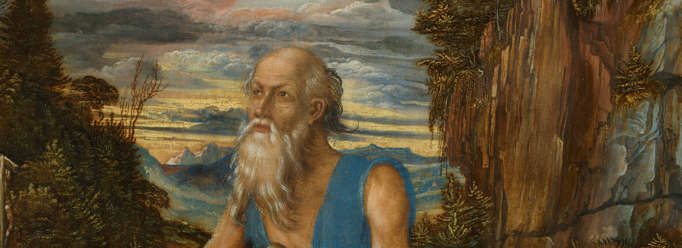
This major academic conference, held onsite and online, and organised by the National Gallery and the University of Cambridge, explored themes from 'The Credit Suisse Exhibition: Dürer’s Journeys: Travels of a Renaissance Artist'.
Speakers from the USA, Europe and the UK examined aspects of Dürer’s achievements in painting, drawing and printmaking and offered new perspectives on his career from his earliest journeys to his final tour of the Low Countries in 1520-1.
Download the conference programme [PDF 68kb]
Supported by the DAAD-University of Cambridge Research Hub for German Studies with funds from the German Federal Foreign Office (FFO).

Image above: Detail from Albrecht Dürer, 'Saint Jerome', about 1496 © The National Gallery, London
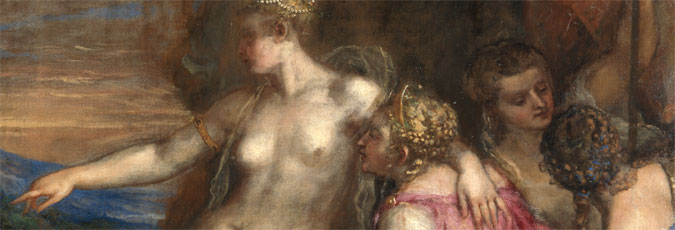
This online conference brought together international scholars, contemporary artists and museum professionals to present research on Titian and his mythological paintings, and to exchange insights gained from the exhibition Titian: Love, Desire, Death.
Organised by the National Gallery in collaboration with its exhibition partners, the conference was an opportunity to further examine and discuss the complexities of Titian’s 'poesie', which emerge with newfound clarity in the exhibition at the National Gallery.
New discoveries and research were presented in the form of short papers by the speakers.
Convened by Dr Matthias Wivel, Aub Jebsen Curator of Sixteenth-Century Italian Paintings, The National Gallery and Dr Thomas Dalla Costa.
Image credit: Titian, Diana and Callisto (detail), 1556-9 © The National Gallery, London
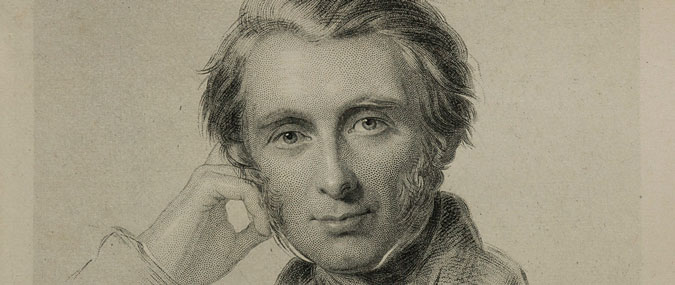
Friday 20 and Saturday 21 September 2019
Marking the bicentenary of the eminent Victorian writer and reformer John Ruskin's birth, this two-day conference capitalised on new research into his life, work and legacy.
Looking specifically at Ruskin’s interactions with, influence on, and legacy for the museum world and art education, talks were structured around four themes: ‘Art Education and Museums’; ‘British Art and Photography’, ‘Language, Writings and Sources’ and ‘Ruskin Today’.
The conference looked at the extent to which Ruskin was working alongside or outside the British art establishments as well as the contribution Ruskin made to the emerging discipline of art history, including canon formation, formal criticism and other genres such as exhibition guides.
A further, crucial set of issues addressed Ruskin’s ongoing legacy, including the reception of his writing about artists and curating, and art in relation to social, environmental and economic questions. It asked what his ideas can teach future generations of museum goers, artists, curators and funding bodies.
Organised by
'Art for the Nation: John Ruskin, Art Education and Social Change' was organised by Dr Susanna Avery-Quash (National Gallery) in partnership with Janet Barnes, a former Director of the Guild of St. George; with support from the Paul Mellon Centre for Studies in British Art. The conference forms part of a collaboration with The Ruskin Foundation, whose London Lecture 2019, in association with Sovereign Films, was given by Professor Robert Hewison (Chair, 'Ruskin To-Day'), at the National Gallery on the Friday evening of the conference.
Download programme
Find out what Ruskin had to say about our paintings in the article, John Ruskin and the National Gallery.
Image above: Detail from a portrait of John Ruskin by George Richmond. Frontispiece to 'The Works of John Ruskin', 1903–12 (Vol XVI: 'A Joy for Ever'). Photo © The National Gallery, London
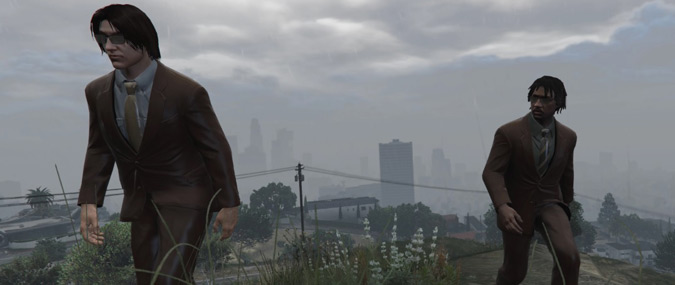
10 May 2018, 10.30–5.30pm
Tracing the influence of the internet in art production and the subsequent need for museums to represent this impact, this conference focused on the rapid development of virtual reality into the artistic realm.
Virtual reality to this day is defined as a computer generated environment that is both immersive and interactive, tied to its technology – a headset and a screen of variable dimensions that enables to create multi-layered imagery. Still a solipsistic experience at this stage, virtual reality is as a counter point to the shared experience of a museum visit and the conference aimed to think critically and constructively about the term virtual in relation to museums.
Marshall McLuhan defined a ‘hot medium’ as something that “engages the senses completely and requires minimal participation from the user”. The conference questioned the status of virtual reality and explored its manifold associations with the artistic context. Curators, artists and specialists in the field critically discussed how this technology is used both as a product and as an object in itself.
Inquiring, engaging and exploring the possibilities of the digital – from enhancement of collections to immersive environments – the conference discussed the distinctions between what is real and what is artificial, what is experienced and what is perceived; and to expand the notion of what the virtual can be.
This was a Contemporary Art Society event in association with the National Gallery.
Image above: Detail from Larry Achiampong and David Blandy, 'Finding Fanon 2' (2015). UHD Digital Video screenshot Courtesy of Larry Achiampong and David Blandy
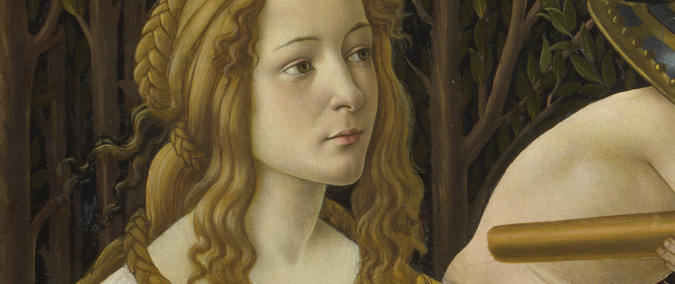
25 May 2018, 6.30–8pm
What do we mean by the ‘Italian Renaissance’, and is the term still a helpful one when interpreting art from the period?
Marking the bicentenary of the birth of Swiss art historian Jacob Burckhardt, this seminar, comprised of a panel of curators, explored how best to present Renaissance art to modern museum audiences.
This was a British Academy event, in association with the National Gallery.
Image above: Detail from Sandro Botticelli, Venus and Mars, about 1485
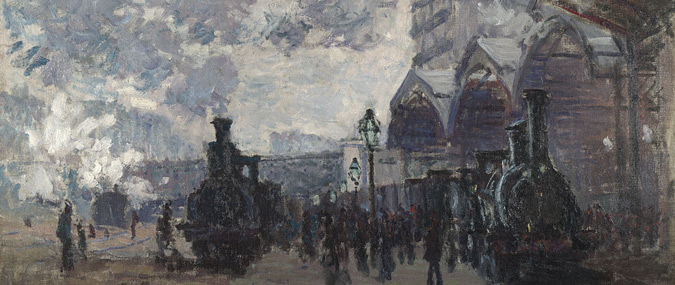
27–28 April 2018
The National Gallery, in association with the Institut Français, presented an international academic conference to coincide with The Credit Suisse Exhibition: Monet & Architecture
While the exhibition catalogue is by a single author, the conference provided an opportunity to hear from other voices and their different perspectives on the exhibition, enhancing or challenging its premises.
Given that the theme of 'Monet & Architecture' was a new one, the conference challenged scholars in the field to explore the theme and to put forward their own arguments and interpretations.
The conference used Monet’s paintings as starting points from which to explore many avenues, from contemporary aesthetics such as naturalism and symbolism, via practicalities such as tourism and transport, to issues of modernity and interpretation. In a wider context, 'Monet & Architecture' had implications for the study of Impressionism, asking how other artists responded to the built environment.
Image above: Detail from Claude Monet, The Gare St-Lazare, 1877
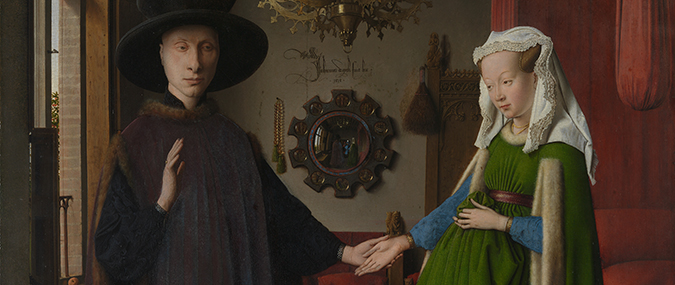
12–13 January 2018
‘I should think it’s the finest picture in the world.’
Burne-Jones on the Arnolfini Portrait (19 February 1897)
Acquired by the National Gallery in 1842, Jan van Eyck’s 'Arnolfini Portrait' with its rich colours, precise detail, and enigmatic symbolism had a profound and lasting impact upon the young Pre-Raphaelite artists who banded together six years later to challenge the art establishment of the day.
Fascination with van Eyck’s painting persisted in artistic circles and the public imagination alike, and the 'Arnolfini Portrait' came to achieve almost cult-like status in the ongoing discussions around the art-historical canon. Van Eyck’s potent influence on the avant-garde painting of the PRB initiated a transhistorical visual dialogue whose ramifications can be traced throughout the development of the Pre-Raphaelite movement and beyond.
Organised in conjunction with the exhibition 'Reflections: Van Eyck and the Pre-Raphaelites', this conference explored the complexities of the relationship between van Eyck and the Pre-Raphaelites. Areas explored included: Netherlandish art and its 19th-century reception, conservation and technique, colour, mirrors and mirroring, painting and literature, photography, magic and the supernatural.
Convened by Professor Liz Prettejohn (University of York) and Dr Claire Yearwood.
Image above: Detail from Jan van Eyck, The Arnolfini Portrait, 1434
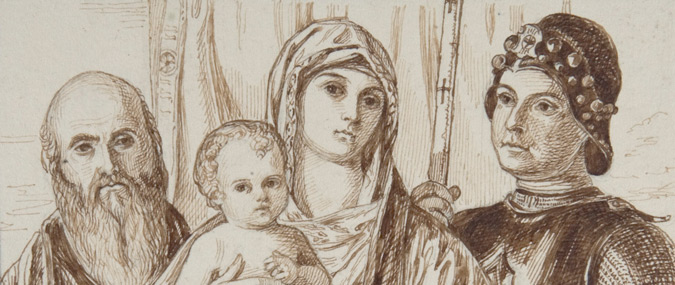
Friday 10 November 2017, 10am–5.45pm
This conference examined the role of English-speaking women as disseminators of knowledge about Old Master paintings and historic painting techniques during the Victorian era
The conference formed part of a collaboration between the National Gallery and Birkbeck, University of London that also includes Chawton House Library, Hampshire, and the Southampton Centre for Eighteenth-Century Studies, University of Southampton. It follows a one-day event held at Chawton House on 25 February 2017.
Aims and scope
John Ruskin infamously dismissed the art historian Anna Jameson as knowing ‘as much of art as the cat’. However, in recent years there has been an upsurge of interest in women like Jameson as influential interpreters of the visual arts and as writers of art history during the formative years of the discipline. This conference, which capitalised and expanded upon this interest, looked at the role of English-speaking women as disseminators of knowledge about Old Master paintings and historic painting techniques during the Victorian era.
While the National Gallery's first Director, Charles Eastlake, and his male colleagues produced scholarly publications, including museum catalogues, aimed at professionals and connoisseurs, women in his circle and in the following generations typically had a wider reach. They could – and did – speak to specialists, but many chose to disseminate information in more creative and demotic ways. Mary Merrifield, for instance, wrote on historic painting techniques and also published articles about women's fashion, in which she used the Old Masters as a sartorial guide, illustrating her points with pictures from the National Gallery’s collection.
Among the research questions the conference speakers engaged with were: What was the contribution of British women writers to the emerging discipline of art history, including canon formation, formal criticism and history of techniques and other genres such as exhibition guides and translations? Was there anything distinctive about women’s approach to these fields? A second set of issues addressed were women’s networks and relationships – between sexes, between generations, and with professional counterparts abroad – as well as exploring women writers’ institutional affiliations. Finally, new insights emerged at the conference about the reception of women writers’ published work in art history, not least in relation to its reach and audiences and its critical fortune.
Read the online journal which accompanied this conference
Supported by the Paul Mellon Centre for Studies in British Art

Image above: A page from an album of mid-19th century drawings by Lady Elizabeth Eastlake, 'After Giovanni Bellini, Virgin and Child with Saints Paul and George, Venice, Accademia'
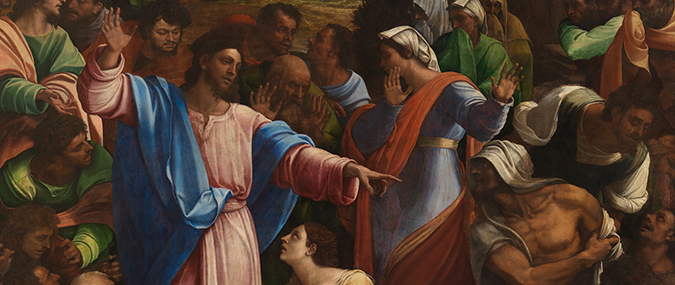
23–24 June 2017
This two-day international conference on Michelangelo and Sebastiano del Piombo, explored their unique creative relationship, their lives, times and, most importantly, their art -- art that helped shape the development of the Western tradition
Coinciding with 'The Credit Suisse Exhibition: Michelangelo & Sebastiano', this academic conference gathered international experts who shared their research on a range of subjects, including the individual practices of the two artists in drawing, painting, and sculpture. Areas examined included the artists’ creative processes and studio practice, with results drawn in part from technical analysis; the intellectual and theological context of their work; their patrons and commissions; and their artistic and historiographical legacies, as well as the creative work that went into the exhibition itself.
Image above: Sebastiano del Piombo incorporating designs by Michelangelo, The Raising of Lazarus (detail), 1517–19
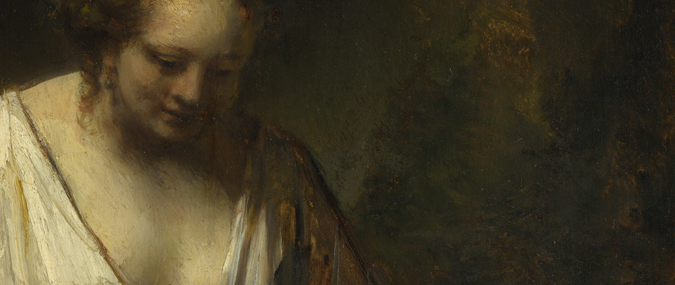
13–15 November 2014
This three-day conference, held in the Sainsbury Wing Lecture Theatre at the National Gallery, explored new technical research on Rembrandt’s panel and canvas paintings and works on paper under the overall theme of the keynote address given at the event by Professor Ernst van de Wetering: ‘The Relevance of Research on Rembrandt’s Painting Technique’. Papers by a group of invited international technical specialists – scientists, conservators and art-historians – from the Netherlands, Germany, Belgium, France, the USA and Britain dealt with recent research derived from technical and scientific study of Rembrandt’s work over the course of his career. The National Gallery’s long-standing presence in, and contribution to, the field of Rembrandt technical research was highlighted by Professor van de Wetering in his keynote address referring to his extended tenure leading the work of the Rembrandt Research Project established in the Netherlands first in 1968.
22 papers were presented at the Conference in person in 2014 and the book of abstracts is available. A selection of these have been published by the National Gallery and Archetype Publications, available for free access.
Conference convener: Ashok Roy (former Director of Science at the National Gallery)
Consultants and Programme Advisers: Jonathan Bikker, The Rijksmuseum, Amsterdam; Blaise Ducos, Musée du Louvre, Paris; Melanie E. Gifford, National Gallery of Art, Washington DC; Petria Noble, The Rijksmuseum, Amsterdam (formerly at the Mauritshuis, The Hague); Mariët Westermann, The Andrew W. Mellon Foundation, New York
Conference organiser and administrator: Ann Stephenson Wright
The conference was supported by the Siebold Stichting Foundation and Fukushima Medical University. Alongside supporting exhibitions and publications devoted to Dutch art of the seventeenth century, the Siebold Stichting Foundation works with Fukushima Medical University on art therapy projects to help those affected by the 2011 tsunami in Japan.
![]()
